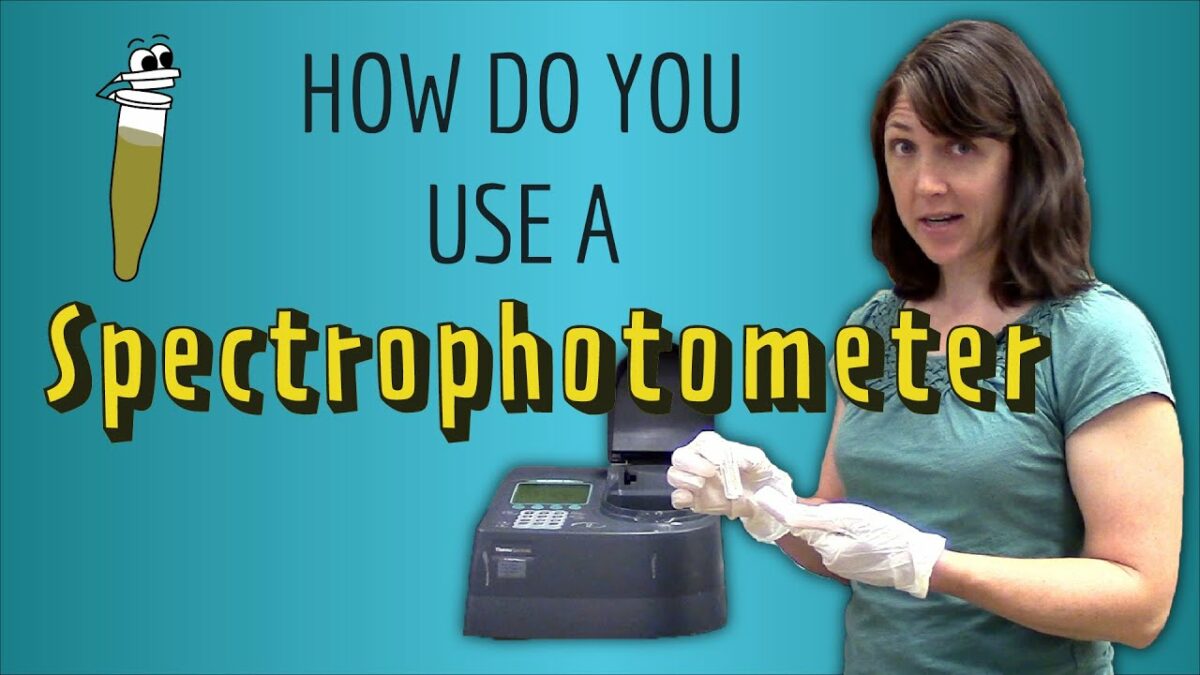Introduction: Spectrophotometry is a powerful analytical technique used in various scientific disciplines to measure the absorption or transmission of light by a sample. Whether you’re a student learning the basics of spectroscopy or a researcher conducting advanced experiments, understanding how to use a spectrophotometer is essential for quantitative analysis and characterization of substances. In this extensive guide, we’ll explore the step-by-step process of using a spectrophotometer, covering everything from instrument setup and calibration to sample preparation and data analysis, with practical tips and insights along the way.
Part 1: Understanding Spectrophotometry and Principles of Light Absorption
- Introduction to Spectrophotometry: Spectrophotometry is a technique used to measure the interaction between electromagnetic radiation (light) and matter. It involves analyzing the amount of light absorbed or transmitted by a sample at different wavelengths.
- Principles of Light Absorption: Light absorption occurs when photons of specific wavelengths are absorbed by molecules, causing electronic transitions or vibrational excitations. The extent of absorption depends on the concentration and nature of the absorbing species.
Part 2: Components and Operation of a Spectrophotometer
- Basic Components of a Spectrophotometer: Familiarize yourself with the main components of a spectrophotometer, including the light source, monochromator, sample holder, detector, and display/interface. Understand the function of each component in the measurement process.
- Operating Modes: Spectrophotometers can operate in various modes, including absorbance, transmittance, and concentration modes. Choose the appropriate mode for your experiment based on the type of analysis and the properties of the sample.
Part 3: Instrument Setup and Calibration
- Instrument Setup: Set up the spectrophotometer according to the manufacturer’s instructions, ensuring that all components are properly connected and aligned. Calibrate the instrument if necessary to ensure accurate and reliable measurements.
- Wavelength Selection: Select the appropriate wavelength range and resolution for your experiment based on the absorption characteristics of the sample. Use the monochromator or wavelength selector to adjust the wavelength settings.
Part 4: Sample Preparation and Measurement
- Preparing the Sample: Prepare the sample for analysis according to the specific requirements of your experiment. Ensure that the sample is homogeneous, free from contaminants, and compatible with the measurement mode (e.g., liquid samples for transmission measurements).
- Loading the Sample: Place the sample in the appropriate sample holder or cuvette, ensuring that it covers the optical path evenly. Use a clean cuvette without scratches or defects to minimize interference with the measurement.
- Taking Measurements: Initiate the measurement process by selecting the desired measurement mode (e.g., absorbance or transmittance) and setting the wavelength and other parameters. Record the baseline measurement using a blank sample (e.g., solvent) before analyzing the sample of interest.
Part 5: Data Analysis and Interpretation
- Recording Measurements: Record the absorbance or transmittance values obtained from the spectrophotometer for each sample at the specified wavelength(s). Take multiple measurements and calculate the average to improve accuracy and precision.
- Calculating Concentrations: Use the Beer-Lambert Law (A = εlc) to calculate the concentration of the analyte in the sample based on the absorbance (A), molar absorptivity (ε), path length (l), and concentration (c). Apply appropriate corrections and conversions as needed.
Part 6: Troubleshooting and Optimization
- Quality Control and Validation: Perform regular quality control checks and validation experiments to ensure the accuracy and reliability of spectrophotometric measurements. Use certified reference materials and standard operating procedures for calibration and verification.
- Optimizing Measurement Conditions: Optimize measurement conditions, such as wavelength range, path length, and sample volume, to maximize sensitivity and signal-to-noise ratio. Minimize sources of interference, such as scattering or stray light, to improve measurement accuracy.
Conclusion
Using a spectrophotometer is a versatile and powerful technique for quantitative analysis and characterization of substances in various scientific disciplines. By following the comprehensive guide outlined above, you’ll be equipped with the knowledge and skills to use a spectrophotometer effectively and accurately. Remember to carefully prepare samples, calibrate the instrument, and analyze data systematically to obtain meaningful results. With practice and proficiency, you can harness the capabilities of spectrophotometry to advance research, solve problems, and deepen our understanding of the natural world.
